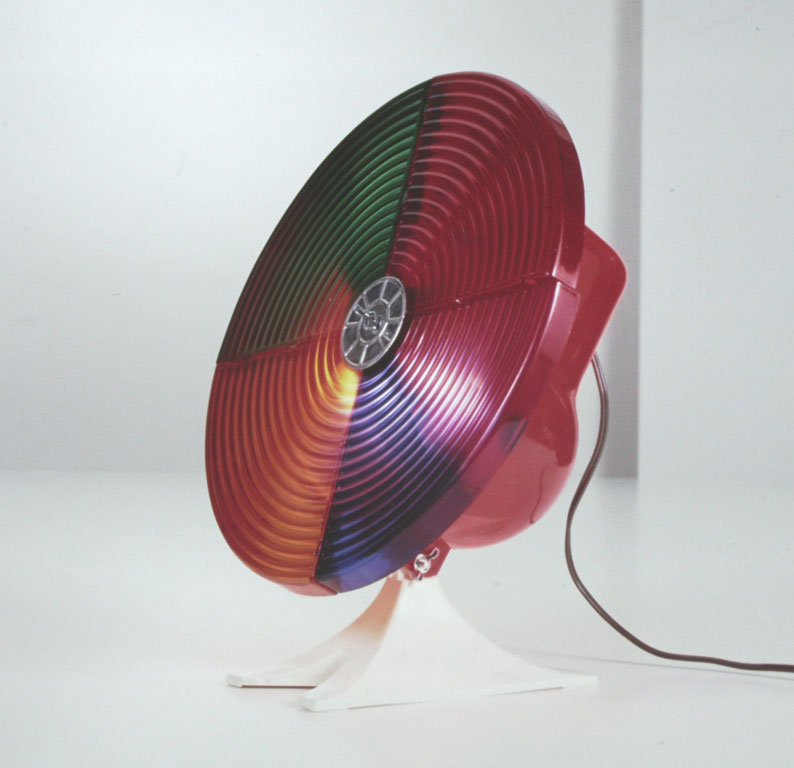Color wheel (optics) on:
[Wikipedia]
[Google]
[Amazon]

 A color wheel or other switch for changing a projected
A color wheel or other switch for changing a projected


hue
In color theory, hue is one of the properties (called color appearance parameters) of a color, defined in the CIECAM02 model as "the degree to which a stimulus can be described as similar to or different from stimuli that are described as ...
(e.g., for an optical display) is a device that uses different optics filters or color gel
A color gel or color filter ( Commonwealth spelling: colour gel or colour filter), also known as lighting gel or simply gel, is a transparent colored material that is used in theater, event production, photography, videography and cinematogr ...
s within a light beam
A light beam or beam of light is a directional projection of light energy radiating from a light source. Sunlight forms a light beam (a sunbeam) when filtered through media such as clouds, foliage, or windows. To artificially produce a li ...
. Common usage includes continuously-rotating wheels for seasonal home displays (e.g., at Christmas
Christmas is an annual festival commemorating Nativity of Jesus, the birth of Jesus Christ, observed primarily on December 25 as a Religion, religious and Culture, cultural celebration among billions of people Observance of Christmas by coun ...
) and controllable color wheels for a particular instrument (e.g., SeaChanger Color Engine for stage lighting
Stage lighting is the craft of lighting as it applies to the production of theater, dance, opera, and other performance arts.
), while non-wheel devices include scrollers and semaphore types with lever arms (e.g., on the 1897-1917 Grand Army Plaza fountain).
In projectors
A common application of the color wheel is to provide a color filter for a single-chip projector, which would otherwise only be able to display agreyscale image
In digital photography, computer-generated imagery, and colorimetry, a greyscale (more common in Commonwealth English) or grayscale (more common in American English) image is one in which the value of each pixel is a single sample (signal), s ...
. The color wheel is placed in front of the light source (usually a metal-halide lamp) and spins rapidly, splitting the light into red, green, and blue primary colors. The chip then displays each primary color one at a time, quickly enough that the human eye will see them as a full-color image. This method is not perfect; in high-contrast scenes, such as a bright streetlight against a night sky, or the credits at the end of a film, the individual color frames may be visible; therefore, high-end and professional projectors split the light with a prism and use three separate chips, one for each primary color.

References
External links
* {{optics-stub Mechanisms (engineering) Optical filters